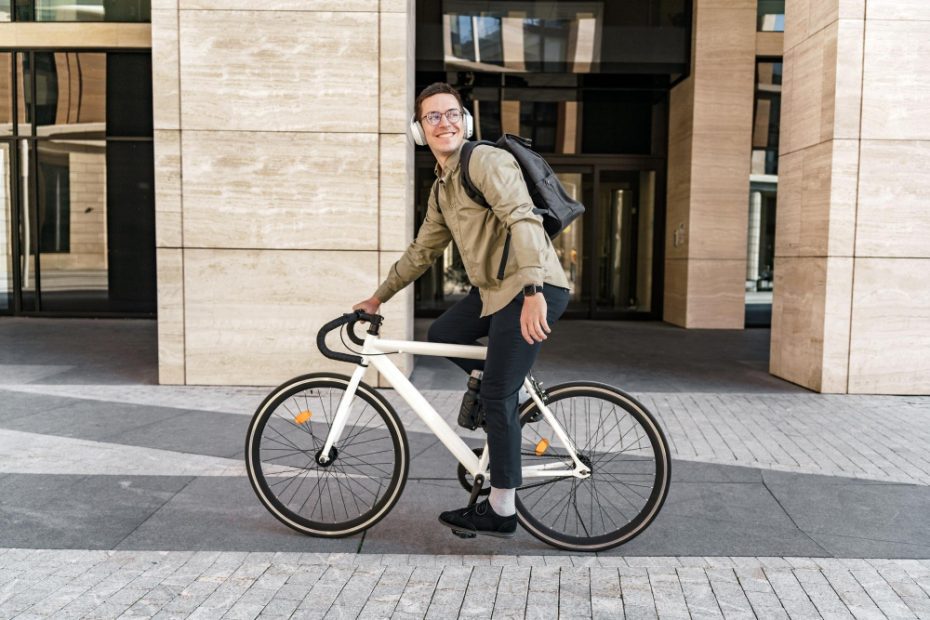How many gears do you need on a commuter bike?
When it comes to choosing a commuter bike, one important consideration is the number of gears it should have. Gears are designed to make pedaling easier by allowing you to change the resistance and find the most comfortable level for your riding conditions. However, finding the right number of gears can be a bit overwhelming, especially if you’re new to cycling or unsure of your specific needs. In this article, we will explore the factors that can help you determine how many gears you actually need on your commuter bike.
Understanding the basics
Before delving into the ideal number of gears for a commuter bike, it’s important to understand the basic mechanics behind gears. Bicycles typically have a system of gears known as a drivetrain, which consists of the chainrings, cassette or freewheel, and the derailleur. The number of gears in a bike refers to the combination of chainrings in the front and cogs in the back, which determines the overall gear ratio range.
The gear ratio range is important because it determines the bike’s ability to tackle different terrains. Bikes with a wider range allow for easier climbing up hills or sprinting on flat roads, while bikes with a narrower range may be better suited for smoother, flatter surfaces. Commuter bikes are generally designed for urban environments, where the terrain is relatively flat, but they may also face occasional inclines or rougher roads.
Determining your needs
When deciding on the number of gears for your commuter bike, several factors come into play:
- Commute distance and terrain: Consider the average distance of your commute and the type of terrain you encounter. A shorter commute on mostly flat terrain may require fewer gears, while longer commutes or hilly routes may benefit from a wider gear range.
- Personal fitness level: Your personal fitness level and strength play a role in gear selection. If you are an experienced cyclist with strong leg muscles, you may be able to handle a bike with fewer gears. However, if you’re just starting or prefer an easier ride, more gears can make your commute more comfortable.
- Load and cargo: Consider any additional load or cargo you may carry on your bike. Carrying heavy bags or equipment may require lower gears to help you navigate smoothly, especially when climbing or accelerating.
- Weather conditions: Weather conditions can also affect your gear choice. Wind, rain, or snow may impact your ability to maintain a steady pace, so having a wider range of gears can be beneficial in adapting to different conditions.
The optimal gear range
While the specific number of gears on a commuter bike can vary, a common recommendation is to aim for a range of 8-10 gears. This range provides enough versatility to handle various commuting scenarios without overwhelming you with too many options.
Choosing a bike with a mid-range gear setup allows you to tackle most urban environments comfortably. You’ll have enough gears to handle inclines and headwinds while still maintaining a good cruising speed on flat sections.
It’s important to note that the actual number of gears you may need can also depend on the type of gearing system your bike uses. Traditional geared bikes typically have front and rear derailleurs, offering a wider range of gear options, while internally geared hubs tend to have fewer gears but require less maintenance.
Are commuter bikes heavy?
When considering a commuter bike, weight is often an important factor to consider. A heavy bike can make commuting more challenging, especially if you have to carry it up stairs or onto public transportation. So, are commuter bikes heavy?
Weight considerations
Commuter bikes typically fall into the lightweight category. They are designed for urban environments and prioritize agility and maneuverability. However, the weight of a commuter bike can vary depending on the type of bike and its components.
City or hybrid bikes, which are popular choices for commuters, are generally lighter than mountain bikes or folding bikes. These bikes are built with lightweight frames made of materials such as aluminum or carbon fiber, which help reduce overall weight.
Components affecting weight
The weight of a commuter bike can also depend on its components. For example, bikes with more gears tend to be heavier due to the additional parts required for shifting. However, having more gears can provide better options for tackling hilly terrains and varying road conditions.
It’s important to strike a balance between weight and functionality when choosing a commuter bike.
Benefits of lighter bikes
A lighter commuter bike offers several advantages. Firstly, it requires less effort to accelerate and maintain speed, making your commute more efficient. Secondly, a lighter bike is easier to handle and maneuver in traffic or tight spaces, improving overall safety.
“A lightweight bike can make your daily commute more enjoyable and less physically demanding.”
Choosing the right bike for your needs
Ultimately, the ideal weight of a commuter bike depends on your personal preferences and the specific conditions of your commute. Consider factors such as the terrain, distance, and your own strength and fitness level.
It’s recommended to test ride different bikes to get a feel for their weight and how they handle. Pay attention to how the bike responds when accelerating, braking, and navigating corners. This will give you a better understanding of which bike is the best fit for your commuting needs.
In conclusion
Commuter bikes are generally lightweight, designed for agility and maneuverability in urban environments. However, the weight can vary depending on the type of bike and its components. It’s important to find a bike that strikes the right balance between weight and functionality, considering factors such as your commute’s terrain and your personal preferences. Remember, a lighter bike can make your daily commute more enjoyable and less physically demanding.
What is the life expectancy of a commuter bike?
The importance of life expectancy
When investing in a commuter bike, it’s crucial to consider its life expectancy. Understanding how long your bike will last can help you make an informed decision and ensure you get the best value for your money.
Determinants of life expectancy
The life expectancy of a commuter bike depends on several factors:
- Quality: The quality of materials and construction significantly impacts how long a bike will last. Opting for a well-built and durable bike will generally result in a longer life expectancy.
- Maintenance: Regular maintenance and proper care play a vital role in extending the lifespan of any bike. Keeping your bike clean, lubricated, and serviced will help prevent wear and tear.
- Usage: The frequency and intensity of use also affect how long your bike will last. If you ride your commuter bike daily over long distances or in harsh conditions, it may experience more wear and require more frequent repairs.
Average life expectancy
While there is no fixed lifespan for a commuter bike, it’s reasonable to expect a well-maintained bike to last anywhere from 5 to 10 years. However, this can vary depending on the factors mentioned earlier.
“Investing in a higher-quality bike and taking good care of it can significantly extend its lifespan.” – Bike Expert
Signs it’s time for a replacement
As your commuter bike ages, certain signs may indicate that it’s time for a replacement:
- Frequent breakdowns: If your bike requires frequent repairs and components start failing, it may be more cost-effective to invest in a new one.
- Frame damage: Significant frame damage or corrosion can compromise the structural integrity of the bike and pose safety risks.
- Worn-out components: When essential components such as brakes, gears, or wheels become excessively worn and cannot be restored, it’s a good indication that it’s time for an upgrade.
Conclusion
While the life expectancy of a commuter bike varies depending on factors such as quality, maintenance, and usage, a well-maintained bike can serve you well for 5 to 10 years. Investing in a high-quality bike and taking care of it will not only extend its lifespan but also enhance your cycling experience.



